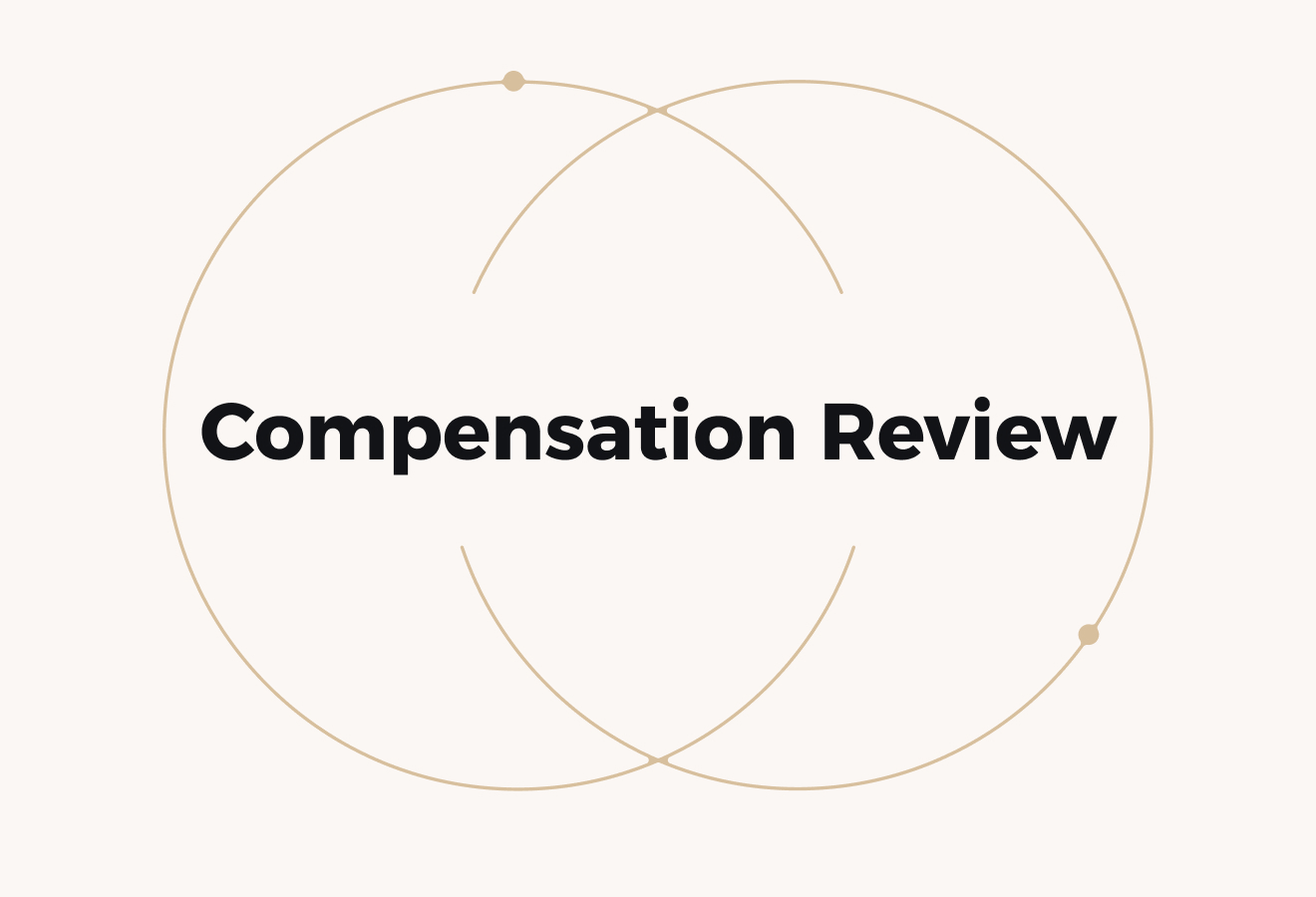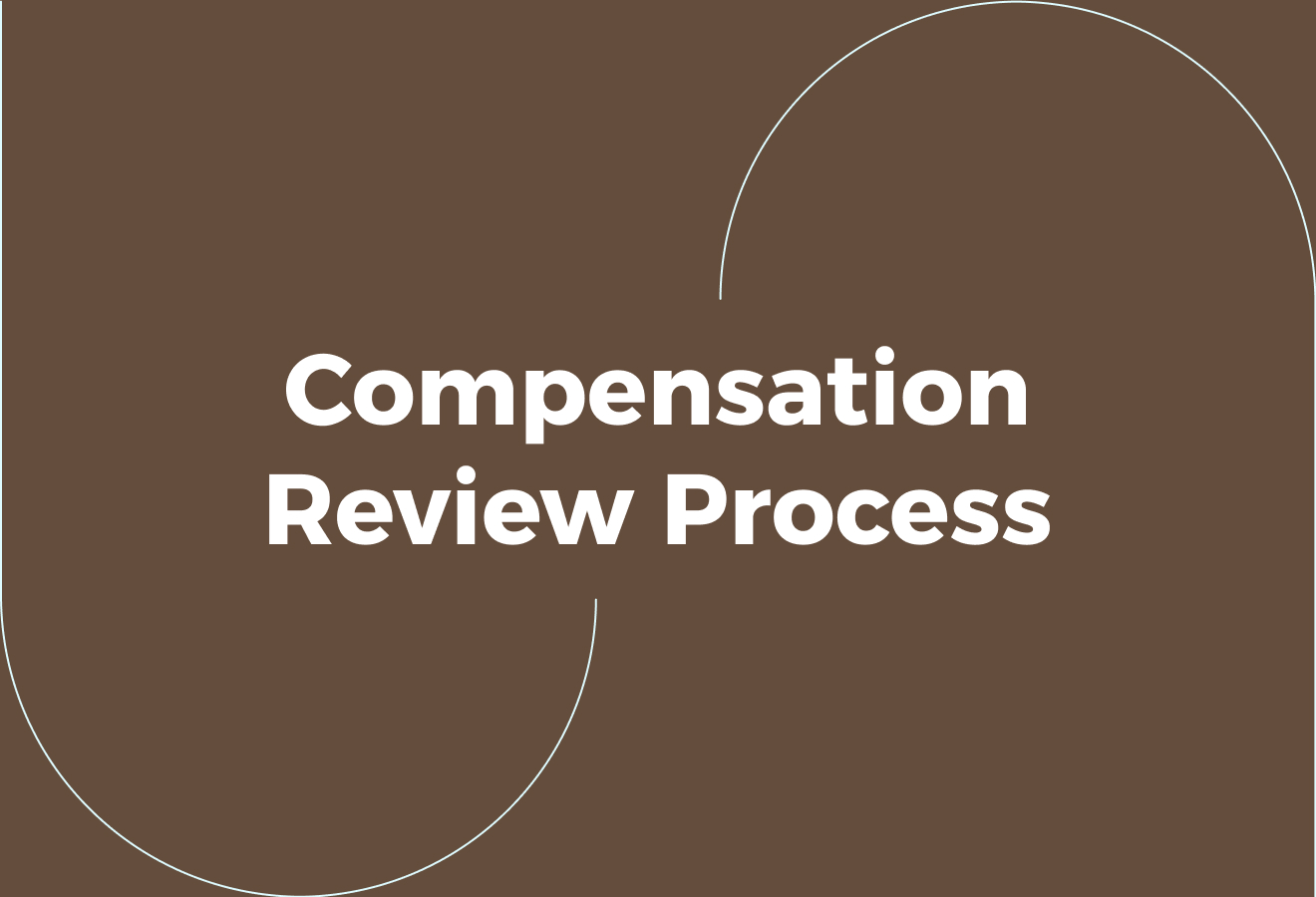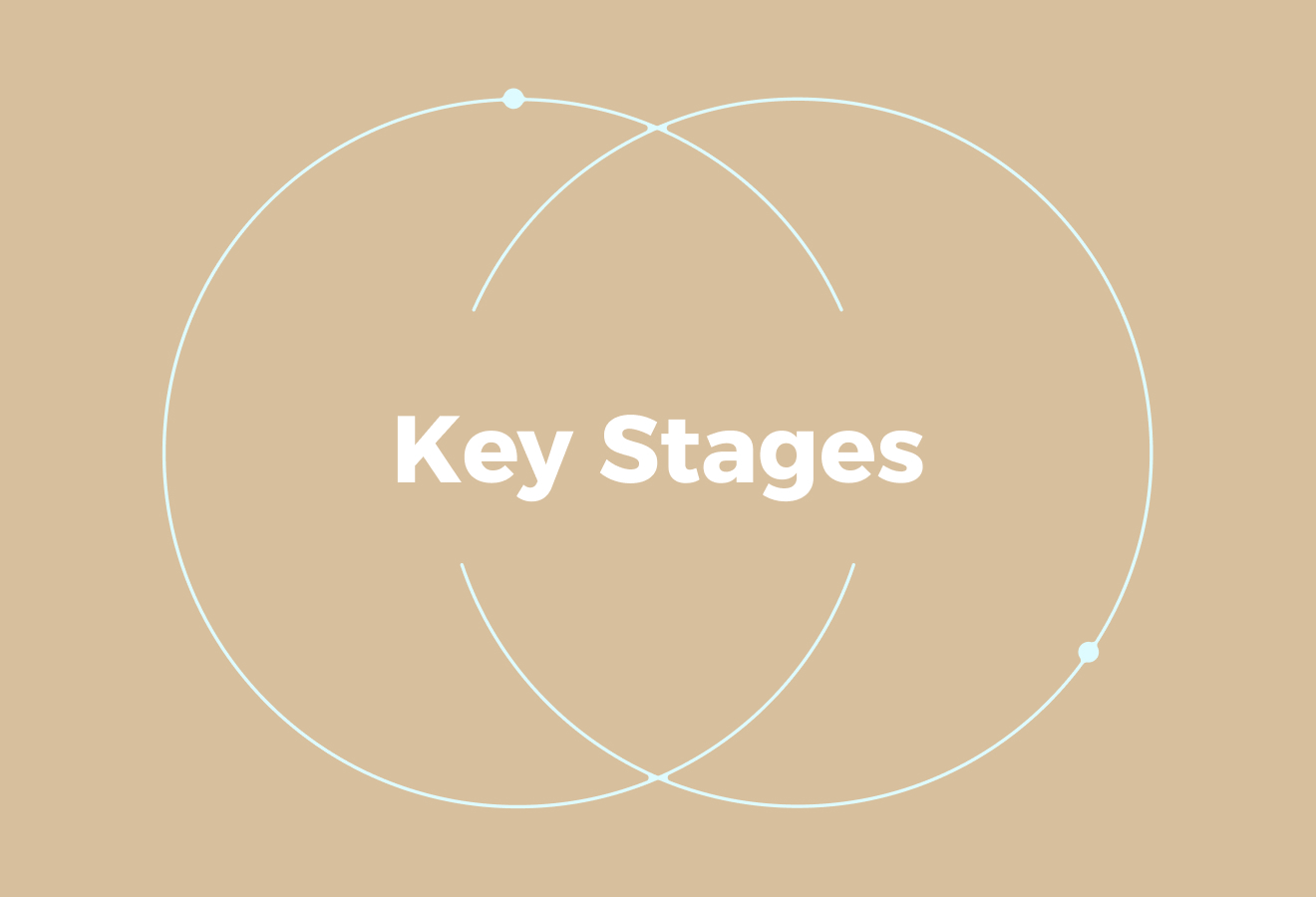Guide to Compensation Review Process (Build a Fair and Transparent Pay Strategy)

Guide to Compensation Review Process (Build a Fair and Transparent Pay Strategy)
Imagine preparing for annual salary reviews while juggling market benchmarking, pay equity checks, merit increases, and a tight budget. A clear compensation strategy turns that chaos into a repeatable process that rewards strong performance, aligns salary bands with market rates, and keeps your total rewards fair. Want to understand each step of the compensation review process, job evaluation, calibration meetings, merit pools, and communication plans so that you can make decisions with confidence? This article walks you through practical steps and tools to get there.
To help, Cercli's global HR system brings salary planning, performance calibration, and market data together so you can run a transparent Compensation Review Process and meet your pay equity and budget goals.
Summary
- Compensation reviews require clear governance to be defensible and consistent across entities, especially since 75% of companies conduct reviews annually, which makes scheduled calibration and single approver trails essential to avoid ad hoc raises.
- Reliable, structured inputs matter because 60% of HR professionals say data-driven insights improve the compensation review process, and blending quantitative flags with qualitative calibration produces fairer and more auditable outcomes.
- Familiar tools like spreadsheets and email break down as headcount, currencies, and contractor types scale, which is why teams enforce operational SLAs, such as 48-hour approval targets in multi-entity reviews, to prevent cascading payroll corrections.
- Cadence is a trade-off between administrative cost and market risk, with 65% of organisations running annual reviews, 15% running bi-annual cycles, and 10% running quarterly cycles, so review frequency should align with retention signals and market volatility.
- Transparency reduces dispute rates and is being resourced accordingly, with about 40% of companies increasing compensation review budgets by 10% over the past year, underscoring the value of published bands, timestamped calibration notes and appeals workflows.
- Technology measurably cuts manual work and error risk, for example, AI-assisted drafting reduced review drafting time by 30% in a 2025 study, and pre-payroll simulations can surface tax and benefit mismatches before pay runs.
- This is where Cercli's global HR system fits in, addressing this by centralising local payroll rules, approval routing, and searchable audit trails, so teams can enforce timing rules, preserve a single source of truth, and run pre-payroll simulations across entities.
What Is a Compensation Review Process?

We treat the compensation review process as the governance for how pay is collected, compared, and changed, with attention to compliance, auditability, and local payroll rules. When it runs well, decisions are traceable, consistent across entities and defensible to employees and regulators.
How Does This Work In Practice?
Most reviews begin with:
- A data sweep
- Pulling payroll exports
- Market benchmarks
- Allowances
- Statutory contributions
- Recent performance ratings into a single dataset
After working with three leading MENA employers over six months, the pattern became clear:
- Managers were stitching together exports and spreadsheets
- Pay compression had emerged in multiple places
- Exit interviews often name pay fairness as a reason for leaving
Those human signals matter as much as any spreadsheet cell.
Who Owns The Decisions, And How Should Governance Look?
Compensation is a shared decision across HR, finance, legal and the business, with clear sign-offs and a single approver trail, according to EdlConsulting.
Their 2025 analysis shows that most organisations maintain an annual cadence, which makes defined governance and scheduled calibration sessions essential to avoid last-minute, ad hoc raises that create inconsistency.
Most Teams Manage This With Familiar Tools, But At Scale That Familiarity Creates Real Costs
Most teams coordinate approvals through email chains and spreadsheets because it feels low-friction and requires no new rollout.
As headcounts:
- Currencies and local rules multiply
- Those threads fragment
- Errors propagate into payroll
- Disputes surface after pay runs
Teams find platforms such as Cercli centralise local payroll rules, automate approval routing and preserve an auditable single source of truth across entities, reducing manual reconciliation and speeding the review cycle while keeping regulatory records intact.
What Data Should You Trust, And How Do You Make It Useful?
You need reliable, structured inputs:
- Current payroll records
- Role and grade mappings
- Market benchmark data
- Performance ratings
- Tenure and contract terms for employees
- Contractors and EOR arrangements
- Exchange rates and tax treatments when pay crosses borders
How Do You Preserve Trust When Decisions Land?
Be transparent about methodology, document calibration notes, and publish a summary rationale to affected groups before implementation. It’s exhausting when long-serving staff discover new joiners on similar pay, so use clear communication and appeal windows to defuse suspicion.
When appeals happen, a workflow that ties the complaint to the original decision, supporting data, and sign-off history prevents escalation into formal disputes.
What Common Failure Modes Should You Guard Against?
The failure point is usually a missing single source of truth:
- Conflicting pay records across systems
- Unsupported manual overrides
- Approvals that live only in inboxes
These breakdowns look small at first, then compound into:
- Costly payroll corrections
- Damaged trust
- Regulatory exposure
Treat those early signs as technical debt that will get expensive to fix later. When processes, people, and pay are aligned across borders, reviews stop feeling like guesswork and start producing accountable outcomes, but the most consequential step is the next one.
That next step changes everything, and it is more revealing than you might expect.
Key Stages of the Compensation Review Process

The core stages sit less as a list and more as a timed sequence of checkpoints you must run cleanly:
- Planning and scoping
- Rigorous data validation
- Cross-functional calibration
- Formal approvals tied to payroll feeds
- Post-implementation audit and appeals
Run well, those checkpoints stop surprises; run poorly, they create last-minute fixes and damaged trust.
Who Should Own Each Checkpoint?
Assign clear owners and SLAs for every touchpoint, not just a title.
HR should own the role and market mapping, and finance should confirm:
- Budget gates
- Legal authorises contract changes
- The business unit owns merit justifications
When ownership blurs, approvals stall and decisions slip into the payroll window, which is why we set explicit 48-hour approval targets for managers in multi-entity reviews to prevent cascading corrections.
How Do You Keep The Data Trustworthy And Auditable?
Treat data validation as the central control, with automated reconciliation between HR records and payroll exports, role-to-grade mappings, and flags for outliers. According to Edl Consulting (2025), many HR professionals now expect analytics to shape the review, a shift that matters because analytics expose hidden compression and allow you to document rationale rather than rely on memory.
Add versioned sign-offs and a searchable audit trail so every raise has a timestamped justification someone can inspect.
The Perils of Piecemeal Payroll: Why Spreadsheets are No Longer Fit for Purpose
Most teams follow the familiar path of spreadsheets and inbox approvals, which works at a small scale but breaks fast. That familiar approach is sensible early on, but as headcount, currencies and contractor types multiply, context fragments across files and replies, response times stretch, and errors reach payroll.
Platforms like Cercli's HR system centralise approvals, automatically apply local payroll rules, and attach sign-offs to payroll exports, so review cycles compress and the audit trail stays intact as complexity grows.
What Controls Prevent Costly Pay-Run Errors?
Build gating rules into the workflow:
- Block out-of-band increases until a two-tier approval is recorded
- Run a pre-payroll simulation to surface exceptions
- Enforce budget checks that reconcile planned increases against allocated pools
With many employers planning to raise salary budgets next year, as reported by the Figures Salary Increase Survey (2025), these controls keep ambitions aligned with cash constraints and reduce the need for correction invoices after pay runs.
How Do You Know The Review Worked?
Measure cycle time from:
- Calibration to pay run
- Track correction rate and appeals
- Monitor pay equity gaps by cohort
- Watch retention among critical roles
Think of compensation review like quality control on a production line, inspect upstream so you do not suffer expensive rework downstream. Small, repeatable KPIs turn opinion into governance and let you prove the review produced equitable outcomes.
What About Contractors, EOR, And Local Compliance In MENA?
Treat every contract type as:
- A separate data stream
- With its own statutory deductions
- Pay cadence and approval rules
Capture contractual terms, local benefit offsets and multicurrency conversions early, and ensure the payroll feed reflects those distinctions. Missing that step is what creates late reconciliations and regulatory headaches.
This is particularly relevant in the UAE, where local labour law is constantly updated to ensure fairness. That familiar process looks tidy on paper until you open the inbox and meet the mistakes that financial auditors notice.
Related Reading
- Market-Based Pay Structure
- Compensation Equity Analysis
- What's Competitive Pay
- Compensation and Employee Retention
- Management Incentive Compensation Plan
- Geographic Pay Differentials
- Pay Grade Structure Example
The Role of Fairness and Transparency in the Compensation Review Process

Fairness and transparency matter because they change how people interpret pay decisions, not just the decisions themselves. When employees trust the method, they accept outcomes they might otherwise fight; when they do not, every raise becomes a negotiation and every anomaly looks deliberate.
Why Does Clarity Shift Behaviour?
This pattern appears across firms of all sizes: uncertainty about where one stands creates comparison anxiety, which quickly turns into distrust. Employees want clear anchors, not evasions; when we lay out criteria and a reproducible method, acceptance grows and appeals fall.
That means publishing a concise rationale for decisions, giving managers the same data to use in conversations, and treating transparency as a repeatable communication task rather than an afterthought.
How Do You Make Transparency Practical For Managers And Teams?
Train managers on two things, in this order, and keep it short.
- Give them a one-page explanation that ties a pay decision to objective inputs, such as market benchmarks, role grade, and performance rubric.
- Provide a script and examples so explanations sound consistent across the organisation.
If you skip the script, managers improvise; improvisation appears inconsistent and undermines fairness. Think of pay communications like a legal brief, compact and documented, not a casual chat.
What Signals Actually Prove A Fair Process?
Use three visible artefacts:
- Published pay ranges or bands for roles
- Time-stamped calibration notes that explain deviations
- An appeals log with outcomes
Each of those elements reduces the perception gap by turning claims into inspectable records. There is a trade-off here, of course; too much raw detail fuels bargaining and privacy concerns, so anonymise where needed and keep explanations focused on the logic, not the number of colleagues.
Beyond the Chat: Centralising Rationale for Auditable Global Pay Narratives
Most teams handle explanations through manager conversations because that feels immediate and familiar. That approach works until managers face cross-border pay rules or contractors with different statutory treatments, at which point messages diverge and confusion increases.
Platforms like Cercli address that friction by centralising local payroll rules, attaching standardised rationale to every approval, and surfacing real-time HR data so managers have a single, auditable source to cite, reducing manual reconciliation and inconsistent narratives.
How Should You Measure Whether Transparency Is Working?
Track perception as an operational metric:
- Run a short anonymous pulse after each review
- Measure appeal rates and the share of raises that required post-pay corrections
- Correlate those with retention in critical roles.
Also recognise the operating context, since many organisations maintain an annual cadence; specifically, 65% of organisations conduct a compensation review process annually, according to SHRM (2025), which means your communication plan should map to that rhythm so expectations are set before decisions land.
Fairness as a Funded Priority: The Business Case for Investment in Pay Equity
At the same time, expect growing investment: approximately 40% of companies have increased their compensation review budgets by 10% over the past year, according to SHRM (2025), a sign that organisations are treating fairness and transparency as resourced priorities rather than optional extras.
Who Needs Coaching To Keep Transparency Credible?
Focus on three roles, in order:
- Line managers: Line managers control the moment of truth; give them scripts and data.
- Calibration facilitators: Ensure standards are applied evenly across teams and are trained to spot bias and enforce documentation.
- HR data stewards: own the evidence, ensuring that the numbers managers use are reconciled with payroll and local labour rules before any conversation happens.
If any link in this chain is weak, transparency collapses into polite confusion. A short analogy to ground this: pay without a clear explanation is a map without a legend, useful only to the person who drew it; add the legend, and the route becomes navigable for everyone.
That seems tidy, but the next decision about timing holds the power to undo or amplify all of this.
Related Reading
- Withholding Compliance Program
- Pay for Performance Philosophy
- Compensation for Remote Employees
- Typical Equity for Startup Employees
- International Compensation and Benefits
When To Review Compensation

You should treat timing as a deliberate mix of scheduled cycles and event-driven checks: set formal review windows that align with your budget and payroll calendar, and supplement them with trigger-based reviews when market, regulatory, or retention signals change.
Choosing the right cadence is a trade-off between administrative overhead and the risk of falling behind the market or losing high performers.
How Often Should Formal Cycles Run?
For most organisations, a single annual cycle suffices for baseline merit and band adjustments when paired with defined exception rules. Some teams favour two formal cycles a year for faster alignment with market moves. According to Figures HR (2025), 15% of companies review compensation biannually; only a minority follow that cadence, which reflects the extra operational cost.
If you need near-constant market alignment, a quarterly cycle exists in practice for a small set of firms, and Figures HR (2025) reports that 10% of companies review compensation quarterly, a signal that quarterly reviews are appropriate only where volatility or talent scarcity justifies the work.
When Should You Trigger An Ad Hoc Review?
Treat ad hoc reviews as a safety valve. Trigger them for clear, objective events: a sudden spike in turnover for a role, new competitor salary data, changes to statutory pay rules, or a strategic hire that resets internal parity.
The pattern I see across fast-growing firms and multi-entity employers is simple, constraint-based reasoning. If the market signal or retention pain exceeds the tolerance set in your scorecards, convene an out-of-cycle calibration, as waiting for the next scheduled window wastes talent and increases the cost of replacement.
How Do You Balance Budget Cycles, Payroll Cutoffs and Operational Friction?
Build timing rules that respect payroll deadlines and cash gates. Publish a calendar that fixes your main review window around the fiscal planning cycle, then set hard cut-off dates for approvals at least one full payroll cycle before any implementation, plus a short freeze window immediately before pay runs to prevent last-minute exceptions.
Think of it like aircraft refuelling: you can top up in flight for emergencies, but routine servicing and refuelling happen on the ground with clear checklists so nothing gets missed.
What Governance Knobs Keep Timing Fair And Repeatable?
Use threshold rules and exception controls, not manager discretion alone. Define measurable triggers that automatically flag outliers, require a defined calibration note, and attach a secondary approver when any proposed increase exceeds a preset multiple of the role band.
This reduces perception problems because decisions follow rules you can show, not judgments managers happen to have at the moment of negotiation.
Most Teams Do The Familiar Thing First, Then Discover The Hidden Cost, So What Next?
Most teams coordinate reviews with spreadsheets and inbox approvals because that approach is familiar and requires no new rollout. As entities, currencies and contractor types multiply, context fragments, approvals slip, and payroll corrections follow.
Platforms like global HR system centralise approval routing, apply country-specific payroll rules automatically, and keep an auditable record of every calibration, so review cycles compress and the risk of post-pay corrections falls dramatically while compliance records remain intact.
How Should You Apportion Effort Across Roles And Contract Types?
Prioritise by risk and value. Give high-turnover or revenue-critical roles a tighter cadence and lower thresholds for intervention, leave stable support roles on the regular cycle, and treat contractors and EOR arrangements as separate queues, as their statutory treatments and payment flows differ.
This triage approach keeps your team focused where timing matters most and prevents review churn from burning bandwidth on low-impact changes.
Timing Affects Trust As Much As Pay. What Do Managers Need To Know?
Managers must be able to explain "why now" as clearly as "why this amount." Supply them a short, evidence-based brief for every decision that ties the timing to a trigger or to the scheduled window, and train them to use the same language.
When timing looks arbitrary, employees assume bias; when timing is predictable and documented, acceptance rises and appeals fall.
From Fire Drill to Fixed Cadence: Mastering Pay Run Timing as an Operational Control
Cercli is designed for companies in the Middle East who need a flexible, compliant, and reliable way to manage their workforce across entities and currencies. For teams looking to move from ad hoc timing to a governed cadence, Cercli’s localised HR system centralises payroll rules, approvals, and audit trails, so timing becomes an operational control, not a risk.
The frustrating part? Timing looks solved on paper, until mismatched data and missed cut-offs turn one pay run into a fire drill.
How Technology Supports the Review Process
Technology turns a compensation review from guesswork into a repeatable experiment: it flags likely errors before payroll, generates consistent calibration rationale, and lets you model the budgetary impact of every decision across currencies and legal regimes. When those capabilities work together, reviews run faster, decisions stay defensible, and managers actually feel prepared for the conversations that follow.
How Do Systems Stop Subtle Pay Errors Before They Hit Payroll?
Good systems run pre-payroll simulations that reconcile proposed increases against live payroll feeds, exchange rates and statutory deductions, so errors surface while there is still time to fix them.
Think of it like a financial dress rehearsal, where the system highlights mismatches in tax treatments, benefit offsets and contribution calculations so finance does not discover problems after the run. These simulations are especially valuable in multi-entity setups, because a single misapplied labour rule in one country can create cascading corrections elsewhere.
How Can Technology Make Calibration Notes Fast And Consistent?
Automation can generate a first draft of the calibration rationale by pulling the exact inputs that informed the decision, including market benchmarks, grade mappings and comparable peers, so managers edit rather than invent explanations.
A 2025 review found that the use of AI in systematic reviews reduced the time taken by 30%, according to Digital Tools to Support the Systematic Review Process: An Introduction (2025), which shows how AI can take routine drafting off a manager’s plate and keep language uniform across teams.
How Do You Keep Transparency Without Exposing Sensitive Data?
Assign access by role, and generate anonymised cohort reports for broader audiences, while keeping detailed evidence available only to authorised reviewers. Embed redaction and field-level permissions into the approval workflow so managers can cite a clear, auditable rationale without revealing colleague salaries.
That separation preserves trust and privacy, reducing the friction that would otherwise turn every pay conversation into a defensive exchange.
From Inbox Chaos to Governance: Managing Exceptions Before They Threaten the Pay Window
Most teams coordinate exceptions through inbox threads because it feels low friction and familiar, but as approvals and local rules multiply, context fragments and last-minute fixes become routine. That familiar approach works early on, yet it creates delays and reconciliation work when payroll windows close.
Platforms like Cercli’s localised HRIS and payroll platform centralise local payroll rules, automate approval routing with built-in country logic, and surface real-time HR data so teams can:
- Close reviews earlier
- Reduce manual reconciliations
- Keep a clear audit trail
How Can Technology Predict The Cash And Budget Impact?
Use scenario modelling to apply the proposed increases across currencies and payroll schedules, then show the cash-flow effect in the next three pay runs and the year ahead. This is not just a spreadsheet with assumptions; it is a set of constrained simulations that automatically apply local tax and social security rules, so finance sees the true cost of a merit pool before approvals are final.
Running scenarios like this prevents surprise budget hits and helps reconcile aspiration with available cash.
What Does This Change Mean for The People Doing The Work?
It relieves the constant low-grade stress of manual reconciliation. It is exhausting when managers must hunt for attachments, reconstruct past decisions, and then justify outcomes without clear evidence; automating the evidence-gathering saves time and confidence.
Organisations report relief when technology reduces manual workload and error risk, and that matters because calmer, better-equipped managers have steadier conversations, which lowers appeal rates and preserves trust.
A surprising question remains: How do you keep human judgment central when the system can write the first draft for you?
Related Reading
- Solutions for Equal Pay
- Performance Incentive Plan
- Typical Equity for Startup Employees
- Compensation Communication
- Compensation Planning Tools
- International Compensation and Benefits
- Enterprise Compensation Management
- Market Pricing Compensation
Book a Demo to Speak with Our Team about Our Global HR System
Think of a single control room for pay decisions that keeps your governance intact as you scale across markets, and consider Cercli to make that control practical for MENA teams.
Platforms like Cercli are already trusted and have reached across borders.










